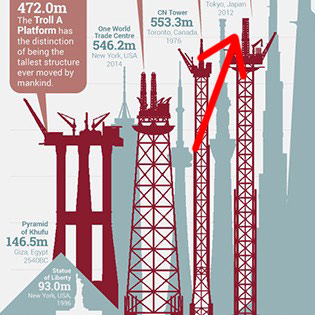by TheOGM
Published on August 23rd, 2012
A Record-Breaking Territory Called Saskatchewan
If someone arranged a quiz in Japan on the topic “What do you know about Canada?” it is most likely that participants would quickly score the highest over the province of Saskatchewan.
No doubt, there are many fascinating facts about this province rightfully attracting the attention of the world.
For instance, Saskatchewan is the only province in Canada whose borders are not tied to geographical landmarks, but drawn along virtual parallels and meridians.
Another fact, the province holds a national record in the number of sunshine hours a year. It champions temperatures in the high +45 degrees Celsius and the low -56.7 degrees Celsius whenever registered in Canada.
Saskatchewanians also proudly name their active sand dunes, outstretched north from the 58th parallel, as the world’s largest.
All these trivia facts alone would be more than enough to trigger someone’s curiosity about Saskatchewan. But apart from that, there is an important economic factor which comes into play.
This bigger-than-California western prairie province is widely known in Japan, owing to the target policy of the provincial government, which focuses on continuously strengthening bilateral business contacts and attracting investments from the Country of the Rising Sun.
The most recent example, proving that policy is taken thoughtfully by both sides, was the latest in a series of visits paid in the spring to Japan by Bill Boyd, the minister of Energy and Resources of Saskatchewan.
In Tokyo and Nagasaki, he met with the leadership of Mitsubishi, Mitsui, Overseas Uranium Resources Development (OURD), and other Japanese companies. Some of them have been already active in Saskatchewan, while others are considering business prospects there.
The fundamental purpose of the mission was to present a broad spectrum of business opportunities to potential investors and further expand the borders of the export market of Saskatchewan, where Japan holds an impressive third position with $1 billion spent on purchases in 2011. A solid chunk of that amount was paid for Saskatchewan’s agricultural goods.
Agro-business
Having $8.1 billion in export sales in 2010, the agro-industry in Saskatchewan could be considered the most diversified sector of the economy. According to official statistics, the province of Saskatchewan has exported over $1 billion in each of the three main crops: cereals (wheat, oats, rye, and barley), oilseeds (canola and flax), and pulses (peas and lentils) and still remained a national leader in carrying across the border the other 13 agricultural commodities.
With 40 percent of the country’s farmland that exceeds 60 million acres, Saskatchewan remains a dependable supplier of top-quality foodstuff for consumers across the globe. Nevertheless, the province keeps an eye on raising competitiveness and implementing new projects in the agro-industry.
The projects related to agricultural regionalization of new crops, such as camelina, appear to be the most promising from an investment perspective. According to a government estimate, by 2015, camelina fields will occupy 100,000 acres. It adds a value of $16.8 million in kind to camelina’s bio-based derivatives (fish nutrients, lubricants, oils, and fuels), consequently making it possible to increase production output and processing sectors of the provincial agro-industry.
Known as the largest source of agricultural biomass in Canada, Saskatchewan has everything required to produce biofuel, including ethanol, biodiesel, and biogas in commercial quantities. Until recently, the major hindering factor has been the higher price for biofuel compared to a conventional one. However, the steadily growing price for gasoline makes this gap less noticeable and will likely stimulate the consumer’s interest in bio-alternatives.
Saskatchewan is capable of converting that interest into a sizable profit for producers. Given the attractiveness of “clean energy,” proximity to the large U.S. consumer market, target investments, and support being rendered by the government, Saskatchewan bioenergy projects may gain a stronger impetus and bigger scale.
In talking about the ways to maximize the efficiency of farmlands in Saskatchewan, we can’t leave unnoticed the traditional nutrients that help crops to grow—fertilizers, which the province produces in volumes ample enough to satisfy local needs and meet the demands of the world market.
Mining
Saskatchewan is the number one producer of potash in the world. It started exporting potassium-bearing materials in the 18th century and successfully continues to do so today, claiming about 30 percent of the world production and nearly one-half of the world’s proven potash reserves.
According to the Potash Corporation of Saskatchewan, which operates more production mines than any other competitor, world demand for potash will continue to go up and pave a way to increase earnings in the years ahead. This should be regarded as a positive sign by anyone interested in long-term and stable investments in the province.
Another cluster of opportunities certainly relates to gold and uranium mining. Gold was first discovered in the province in the North Saskatchewan River near Prince Albert in 1859, but production peaked in the late 1980s with $55 million in 1988. The government of Saskatchewan reassures that large areas of high gold potential still remain unexplored, and it encourages exploration and investments through initiating regional detailed mapping, geochemistry, and geophysics programs in the La Ronge Belt and Glennie Domain.
Saskatchewan is the world’s second largest uranium producer with deposits containing the highest percentage of ore anywhere. As of 2009, production reached 11,997 tons U3O8 (10,173 tU) mostly coming from its third-generation mines, which started operating in 1999 at McClean Lake and McArthur River in northern Saskatchewan.
Despite the cautious attitude that has taken over lately in the world regarding the use of nuclear energy, Canada’s approach is based on the innovative leverage of nuclear resources. Having currently operated 18 reactors in three provinces with over 12,600 MWe of electric power, Canada plans to expand its nuclear capacity over the next decade by building more facilities. For Saskatchewan, these plans mean a long-term and sustainable demand for its high-grade uranium production.
And the last but not least group of opportunities making the Province of Saskatchewan a hot-play region relates to the oil and gas industry. This sector of the provincial economy has been growing by leaps and bounds.
Being Canada’s second largest oil producer after Alberta, Saskatchewan estimates its conventional oil in place at 45.6 billion barrels. In 2010, those reserves made it possible to produce 154 million barrels and attain $10.8 billion in sales earnings.
For those interested in oil and gas exploration and development, business opportunities in Saskatchewan seem abundant. That’s the reason why there are so many junior companies, such as 3MV Energy, which are growing and prospering there.
Apparently, 3MV Energy’s decision to acquire all of its properties in Saskatchewan and start producing light oil there was heavily influenced by favorable investment conditions, a stable royalty regime, and incentives for enhanced oil recovery being created by the provincial government.
The strategy of creating a modern business landscape certainly bears fruits. According to the forecast of the Royal Bank of Canada, Saskatchewan will take a lead in 2012 with a real GDP of 4.6 percent, leaving behind Alberta and the other provinces.
With a reference to Statistics Canada, the RBC experts feel confident that “strong investment on major energy, mining, and smelting projects will significantly boost capital expenditures in provinces such as Newfoundland and Labrador, British Columbia, and Alberta and will also push spending in Saskatchewan further into record territory.”
Well, it seems for those willing to succeed in the “record-breaking territory” that there is no better time to gain a foothold.
Did you enjoy this article?
 President Of Shell Canada Ltd.
President Of Shell Canada Ltd. How Tall are the World’s Largest Offshore Oil Structures?
How Tall are the World’s Largest Offshore Oil Structures? OGM Exclusive Interview: Moshiri on Vaca Muerta - One of the World’s Most Exciting Shale Oil and Gas Plays
OGM Exclusive Interview: Moshiri on Vaca Muerta - One of the World’s Most Exciting Shale Oil and Gas Plays The UK-Canada Love Affair
The UK-Canada Love Affair 8 Great Women’s Organizations - Making All The Difference
8 Great Women’s Organizations - Making All The Difference
